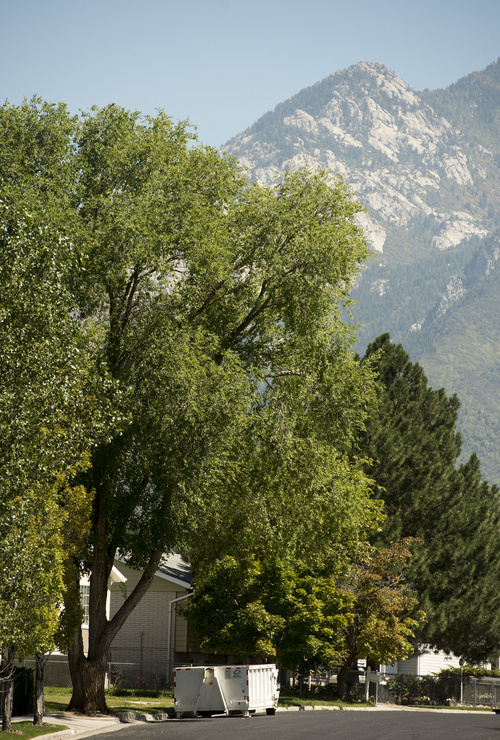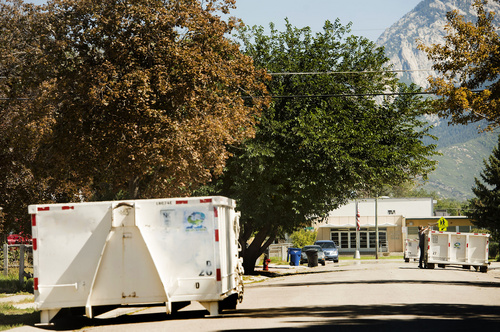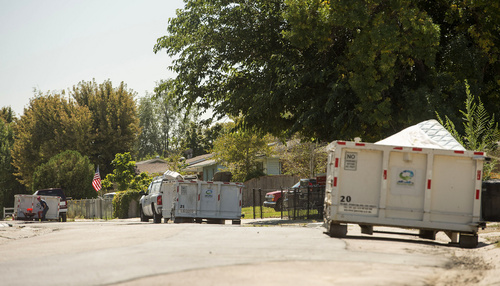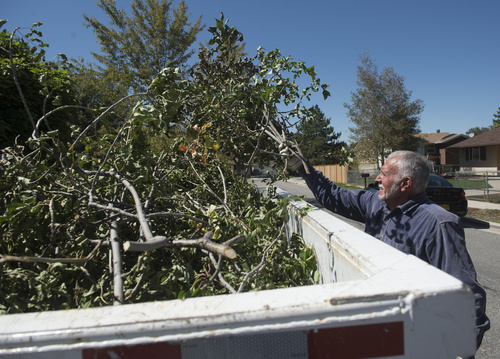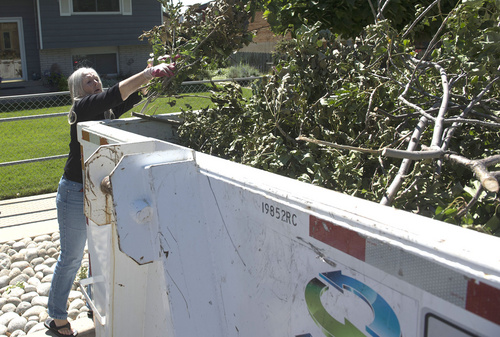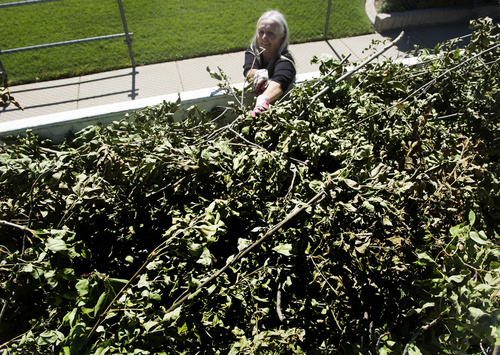This is an archived article that was published on sltrib.com in 2014, and information in the article may be outdated. It is provided only for personal research purposes and may not be reprinted.
When should those dumpsters show up in your neighborhood to collect tree branches,old sofas and other junk too big for weekly disposal?
Should it be the same time every year, so you know when to expect it?
Or should the dumpster drop-off schedule be rotated every year? That way, if your turn wasn't until mid-summer this year, next time around you would be in line for a week in spring or fall, more traditional cleanup periods.
Salt Lake County Council members decided unanimously last week that in the interest of fairness, a rotating schedule is best for unincorporated residents overall.
That message will be delivered to the Wasatch Front Waste and Recycling District, which puts out and collects the dumpsters.
The waste district is overseen by a nine-member board, four appointed by the county and one each fromCottonwood Heights, Herriman, Holladay, Taylorsville and part of Murray, making up the areas where it provides cleanup services. In total, more than 80,000 homes are involved.
The board will make the final decision this fall.
Cost shouldn't be a factor, said Dave Delquadro, the council staff member who reviewed the district's numbers for both the rotating and static cleanup schedules.
A rotating schedule is only slightly more expensive ($50,000) now that the waste district has trimmed its service a bit. Instead of putting out one dumpster for every 4.9 homes, as it did to start with four years ago, the district's house-to-dumpster ratio is now one for every six homes, he said.
Councilwoman Aimee Winder Newton initially said she supported a static schedule, noting that when she worked for Taylorsville City, "I got a lot of feedback from people who were frustrated that they didn't know when [the dumpsters] were coming."
But Newton changed her mind after other council members convinced her of some of the inequities of that approach. Sam Granato pointed to this year's waste district pickup schedule, which showed that the Canyon Rim and East Millcreek communities got their dumpsters in mid-summer — and would continue to get them at that less-than-desirable time if the waste district goes with a static schedule.
"Those dates don't work for my constituents," Granato said adamantly.
Councilman Steve DeBry, who represents the south-central part of the valley,agreed. "I don't think it's fair to Millcreek to never have spring or fall and only a summer cleanup," he said.
Pam Roberts, the waste district's executive director, said residents who accumulate "green waste" outside of their dumpster period have other options to dispose of tree limbs, grass clippings and brush.
The district has trailers on wheels that residents may rent for $30 to carry away refuse, she noted. And over the past year, it has enrolled 1,500 households in a "green can" campaign to collect this biodegradable organic matter.
In the meantime, county Mayor Ben McAdams also stepped up his campaign to get residents to recycle.
A year ago, he challenged them to increase the amount of refuse they recycle by 20 percent over a two-year period. Year one was fairly successful, McAdams said, with recycled materials countywide going up 8 percent.
"I know we can accomplish this goal," he added, enlisting additional support from mayors Larry Johnson of Taylorsville and Holladay's Rob Dahle.
"Residents of both cities did a great job" this past year, McAdams said. "They were neck-and-neck in the amounts they recycled."
Dahle and Johnson pledged to dedicate more effort to educating residents about recycling's contributions to air and water quality and extending the life of the landfill.
"The majority of citizens want to do the right thing. With the proper information, they will," Dahle said. "This is part of a bigger issue about individuals having an impact on the environment they live in."
Twitter: @sltribmikeg —
Green communities
Recycling collections so far this year in the cities and unincorporated areas served by the Wasatch Front Waste and Recycling District are (in tons):
• Millcreek — 2,585
• Taylorsville — 2,143
• Cottonwood Heights — 1,781
• Kearns — 1,412
• Holladay — 1,271
• Herriman — 1,015
• Magna — 993
• Murray — 753
• White City, Granite — 719
• Copperton — 41
Total — 12,713 tons


